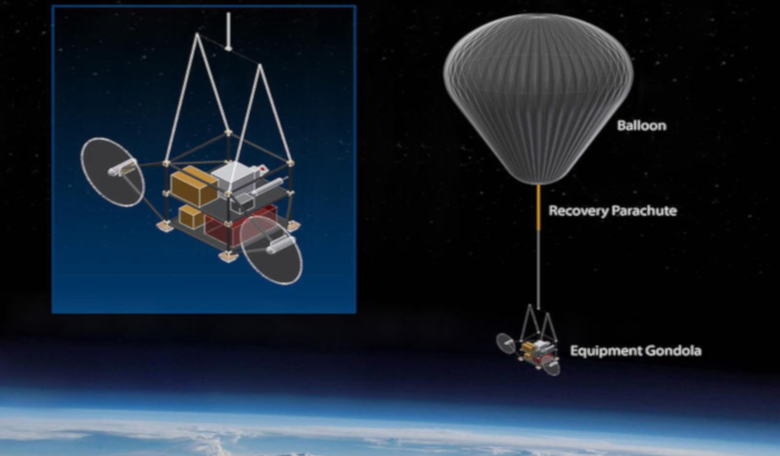In an attempt to determine if long-lived reflective particles placed into Earth’s upper atmosphere could diminish global warming by blocking sunlight, scientists at Harvard University are proposing a stratospheric balloon experiment to test just that.
If given the go-ahead, small amounts of chalky dust will be dropped into the atmosphere, by a research balloon that will fly a 600 kilogram payload near an altitude of 20 kilometres, possibly next year, so that the effects of the aerosol particles can be observed.
Called the Stratospheric Controlled Perturbation Experiment, or SCoPEx for short, this solar geoengineering project, would launch from the Esrange Space Center in Kiruna, Sweden in June 2021, if approved by an independent Advisory Committee.
Solar engineering is the idea that airborne particles can help mitigate the affects of a warming planet by reducing the heat Earth receives from the Sun.
This has happened naturally in Earth’s past by volcanoes whereby sulfate aerosols belched out into the stratosphere have appreciably cooled the planet.
But studying how reflective particles affect incoming sunlight is difficult and scientists rely on computer simulations to provide estimates as to the risks and benefits of solar geoengineering.
Unfortunately, current limitations may make the simulations look “too good”, say SCoPEx and so what is needed is a real-world test.
Before jumping straight in and releasing dust into the atmosphere, the SCoPEx Research team would like to have a practise run to test various controls on the gondola suspended underneath the balloon such as its power, data, navigation, and communication systems.
The team emphasised that no aerosols would be released on the flight in June. The exercise is purely to test a new flight platform that has not flown before as the team intend to use a propelled balloon system, and to date, only a few of these have flown in the stratosphere.
The flight will be managed by the Swedish Space Corporation (SSC), say the research team as not only have SSC been launching scientific balloons for over 40 years, the experiment also needs to benefit from a launch site with relatively low winds, the ability to fly a 4-6 hour flight, and the capability to land on land – criteria that can be ticked off with the Kiruna site.
If the flight is approved and the test is successful, the team are eventually aiming to release up to 2 kilograms of calcium carbonate into the stratosphere and will use the SCoPEx balloon to double back to observe the resulting plume.
Injecting aerosols into the stratosphere to combat a warming climate does not come without risks, naturally.
Scientists studying solar engineering say that using sulphates as light-blocking particles runs the risk of ozone loss and heating of the lower tropical stratosphere. This in turn, would increase water vapour concentration causing additional ozone loss and surface warming.
For this reason, the team settled on using calcium carbonate (CaCO3) a calcite mineral also known as chalk, as it is not particularly reactive.
Although chalk does not exist naturally in the stratosphere, it might help replenish the ozone layer by reacting with ozone-destroying molecules, say SCoPEx scientists in a research paper published a few years ago.
However no one knows what will happen until it is released and then studied afterwards.
“The combination of emissions cuts and solar geoengineering could reduce climate risks in ways that cannot be achieved by emissions cuts alone: It could keep Earth under the 1.5-degree mark agreed at Paris. However, this promise comes with many risks” write the authors in their paper. “Further research on this and similar methods could lead to reductions in risks and improved efficacy of solar geoengineering methods.”
The independent Advisory Committee are set to make the decision as to whether the test can take place by the 15th February, 2021.











